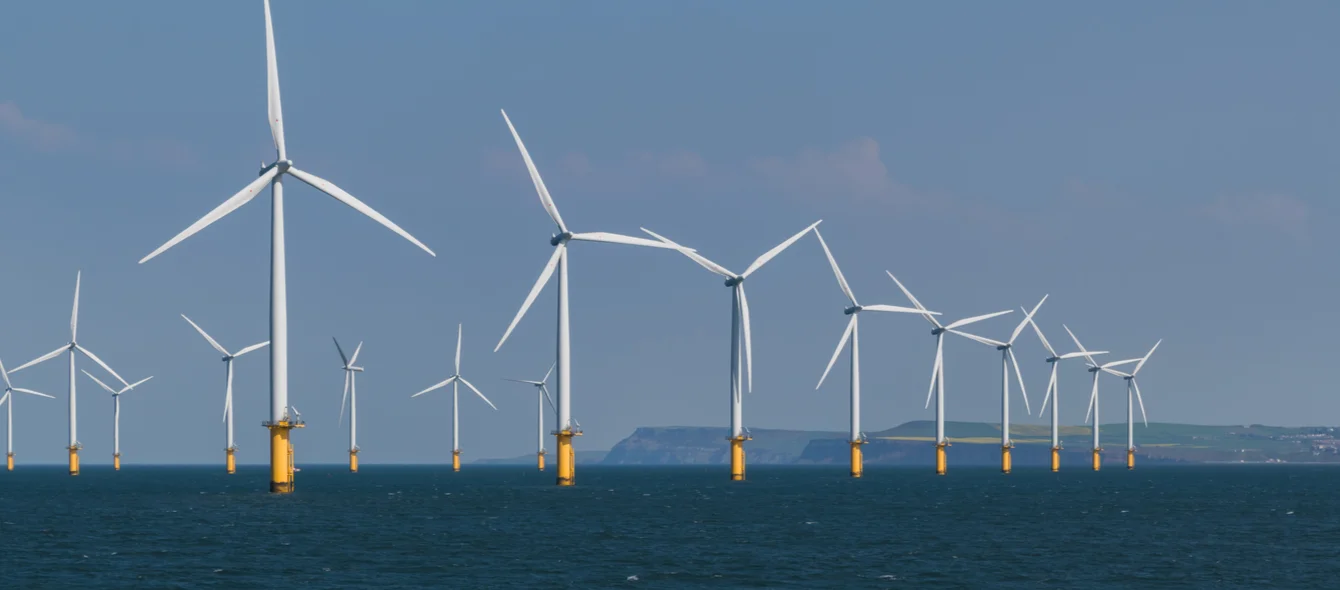Since the adoption in June 2019 of a net zero carbon emissions target by 2050, the UK government has progressively upped its support for wind power.
The sector is increasingly viewed not simply as an affordable source of clean energy, but part of a sustainable industrial strategy, which will create jobs domestically, provide revenue via the export of goods and technology and help pull the UK out of the coronavirus pandemic downturn. There is in fact good precedent for such a strategy. North Sea oil and gas’s value to the UK economy has always gone beyond the production of oil and gas, providing a platform for the export of domestically-developed technology across the world. But with climate change concerns now to the fore, wind looks set to become the new powerhouse industry for UK plc.
The UK has the largest technical potential for wind power of any European country, at around 5,400 TWh/yr, according to a 2017 resource assessment by industry association WindEurope. To put this in perspective, total UK electricity generation last year was 324 TWh. Wind power could thus meet UK electricity demand many times over.
The first known wind turbine to generate electricity was installed more than a 100 years ago in July 1887 at Malkirk in Scotland. It was built by James Blyth, an electrical engineer and Freeland Professor of Natural Philosophy at Anderson’s College (now Strathclyde University) to generate power for his home. It was horizontal rather than today’s vertical turbines and used cloth sails rather than blades. The electricity was stored in simple batteries. Blythe offered the electricity to his village who branded it “the work of the devil’ and refused. However, he built a second turbine to power the Montrose Lunatic Asylum, Infirmary and Dispensary, which remained in operation for 30 years. Following its dismantling in 2014, the next municipal wind turbine was not built in the UK until 1951.
Growing support
Speaking to the Conservative Party conference in October, UK Prime Minister Boris Johnson compared the UK’s wind resource to that of Saudi Arabia’s oil reserves and said £160 million would be invested in ports and factories to manufacture the next generation of wind turbines.
This comes on top of the increase in the government’s target for offshore wind from 30 GW to 40 GW by 2030 and the reintroduction of onshore wind to government support schemes. In September 2019, the UK Contracts for Differences (CfD) Allocation Round 3 saw more than 5.4 GW of offshore wind capacity awarded at affordable prices – from £39-£41/MWh in 2012 prices.
With two live seabed leasing rounds still active, Round 4 in England and Wales (7 GW) and ScotWind in Scotland (10 GW), the Crown Estate estimated recently that the UK offshore wind project pipeline alone now amounts to some 50 GW. As a result, the wind sector, both on and offshore, looks well placed to take a central role in the government’s emerging green industrial strategy.
Job creation
The government is building on an industry in which the UK is already a world leader. At the end of 2019, the UK had the world’s largest offshore wind sector, with 9.6 GW of capacity installed, representing 33% of the global total. As a result, wind power in the UK continues to see records tumble, providing momentarily 59.1% of the UK’s electricity needs on August 22 and meeting 30.5% of the country’s electricity demand for the whole of February. However, the benefits of wind extend beyond the clean energy it generates.
A study published in 2019, Quantifying the benefits of onshore wind to the UK, prepared by Vivid Economics for UK renewable energy association RenewablesUK, estimated that increasing the UK’s onshore wind capacity to 35 GW by 2035 would support 31,000 jobs and enable an export industry worth £360 million, in addition to reducing consumer electricity bills by 7%.
The Office for National Statistics (ONS) estimates that in 2017 there were 5,300 direct onshore wind jobs in the UK. The report says this could rise to 14,000 by 2035. Each direct job is estimated to support 1.24 indirect jobs, raising the total to 31,000. Meanwhile, RenewbleUK forecasts that a booming offshore wind sector could support 27,000 direct jobs by 2030, which, using the same multiplier, would add a further 33,480 indirect jobs, bringing the on and offshore wind sector total close to 100,000 jobs by 2035.
Powering the transition
As the International Energy Agency argues in its World Energy Outlook 2020, published in October, economies will increasing rely on electricity, as oppose to solid, liquid or gaseous fuels, for a larger share of their energy requirements. Power sector decarbonisation and expansion are thus essential for the sustainability of increasingly wide sectors of the economy. Take for example e-mobility. Electric car sales in the UK jumped last year to 37,850 from 15,510 in 2018, despite overall car sales dropping 2.4%. Cities such as Manchester and Glasgow received new electric buses, while London leads the way in terms of e-bus deployment, aiming to have all of its roughly 8,000 buses zero emission by 2037.
These vehicles need low carbon electricity to be sustainable, just as do moves towards greater electricity use in heating, cooking and industry. There has also been an upsurge in interest in hydrogen production, which has the potential to decarbonise gas use and provide low carbon fuel storage. Yet, again, to be sustainable, hydrogen production at scale will need a hugely increased supply of clean electricity to run the electrolysers that split water molecules into their component parts.
Photo credit: shutterstock.com, Riekelt Hakvoort
